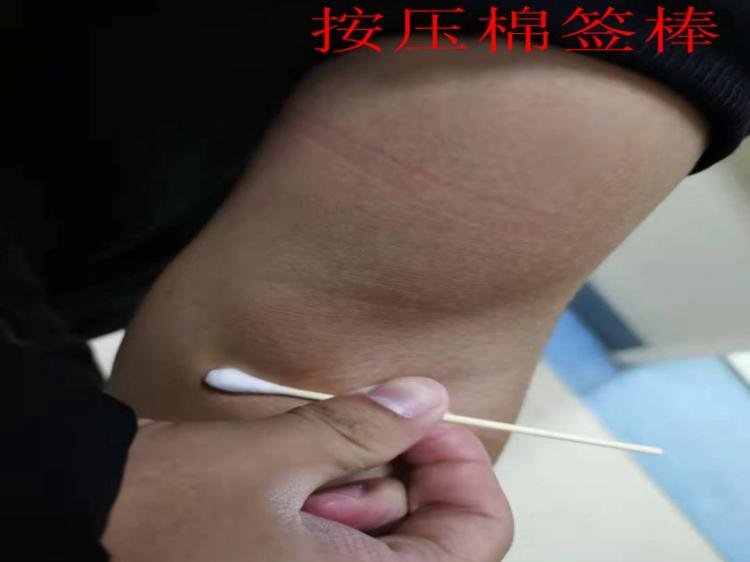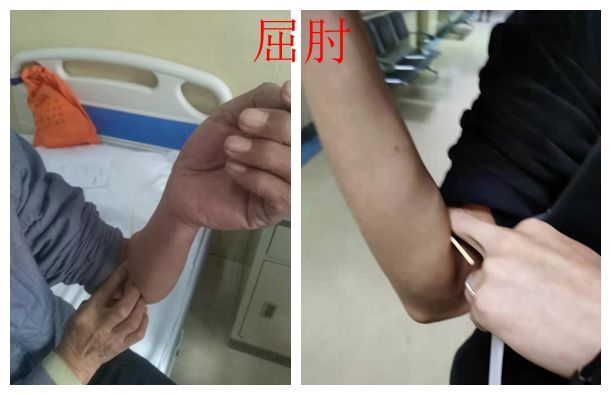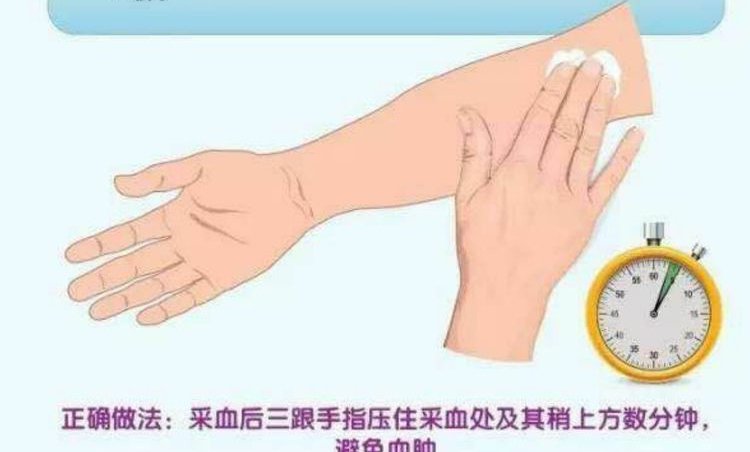After blood collection in the hospital, the doctor will instruct you to use a cotton swab to press the puncture site. However, many people will experience swelling and bruising at the puncture site after blood collection. This is usually caused by the wrong pressing technique after blood collection.
Wrong pressing method will not only lead to complications such as subcutaneous congestion, bleeding, pain and even limitation of limb movement, but also affect the clarity of blood vessels and increase the difficulty of the next venipuncture.
How to properly press after phlebotomy? Come and learn the correct posture!

1 Should you bend or extend your elbow when taking blood?
Elbow flexion and compression are not uncommon in clinical practice, and some medical staff even tell patients to curl their arms. So should you extend your elbows or bend your elbows?
Don’t bend your arm after the blood is drawn! ! !
When you bend your elbow, it hinders the venous return of the elbow, thus increasing the intravascular pressure of the elbow vein, so the blood can easily seep out from the vascular needle, forming subcutaneous congestion, which is you Bruises at the blood draw site.
The pressing force of the forearm flexion and elbow pressing method mainly depends on the force of the angle formed by the elbow joint when the elbow is flexed, the pressing area is large, and the force on the puncture point is small, especially in patients with thin subcutaneous fat muscles due to the lack of tissue support , the local force of the puncture point is smaller, and the chance of complications is higher.
The study shows that the forearm extension and elbow pressing method can fix the pressing part, the cotton swab fixation is not easy to shift, the force of the puncture point is uniform, and the condition of the pressing part can be directly observed, so there are fewer complications.
Therefore, presses should be done with an extended elbow.
2How many minutes is the compression time appropriate?
The normal blood coagulation time is 1 to 3 minutes, so it is enough for normal physical examination personnel to press for 3 minutes; for patients with coagulation dysfunction, it is necessary to press for 5 minutes, and use anticoagulation such as heparin and warfarin. Medication patients should press for 10 minutes.
3 examples of wrong press method:


Wrong press method
4 Examples of correct press method:

< p> 5 What should be done to press correctly?
(1) The compression area and compression time should be sufficient. Immediately after the blood is drawn, press a sterile cotton swab or cotton ball on the eye of the needle, about 0.5 cm above the eye of the needle on the skin, and try to be in the same direction as the blood vessel, and straighten the elbow when pressing. This presses both the skin needle and the blood vessel needle at the same time.
(2) Just press without kneading, keep pressing evenly. Rubbing the eye of the needle will not only stop the bleeding, but also accelerate the bleeding. Pressing to see if the bleeding will not only affect the speed of bleeding, but also lead to congestion.
(Contributor: Shi Rongfen)

END